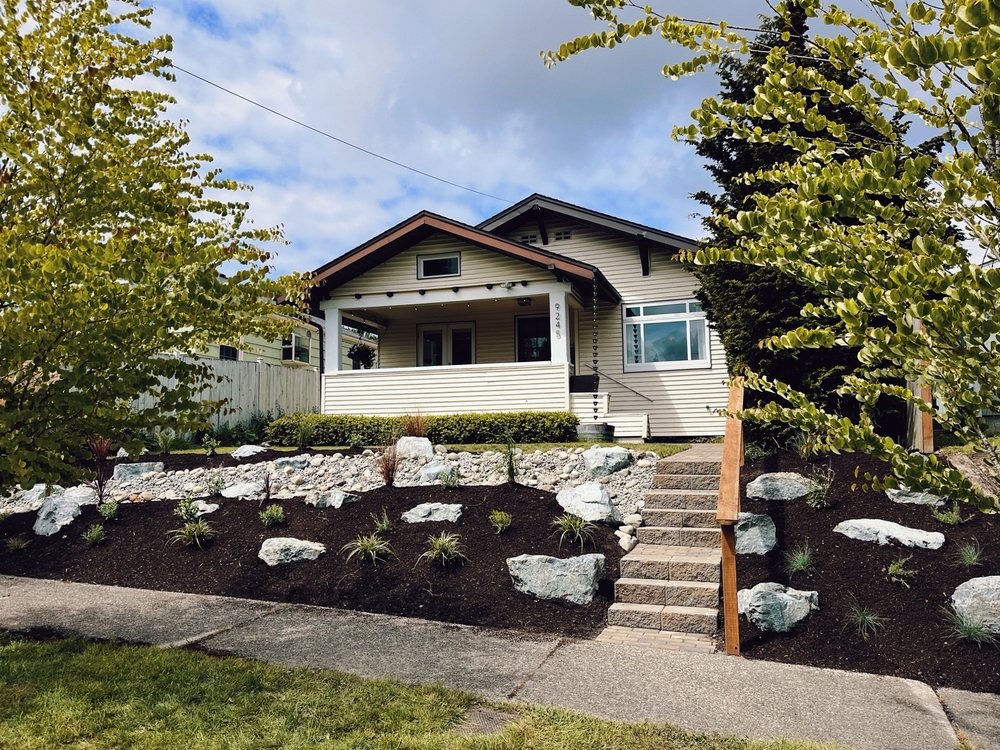Installing a Wooden Railing on a Seattle Deck to Enhance Safety and Aesthetics
If you’re looking to elevate the safety and appearance of your outdoor space, installing a wooden railing on your Seattle deck is an excellent solution. Whether you’re working on a deck, patio, or staircase, a well-designed railing can significantly improve both the security and style of your home. In this guide, we’ll walk you through everything you need to know about railing installation to ensure you create a sturdy, aesthetically pleasing addition to your outdoor area.
Why Install a Wooden Railing?
Before diving into the installation process, let’s explore why installing a wooden railing is a smart choice:
- Safety First: Railings act as protective barriers, especially around elevated surfaces like decks and stairs, helping to prevent falls and enhancing the overall safety of your outdoor space.
- Aesthetic Appeal: A wooden railing adds charm and elegance to your deck or patio, complementing natural elements while blending beautifully with the surrounding landscape.
- Increased Property Value: A well-crafted railing can boost your home’s curb appeal and may even increase its resale value, making it more attractive to potential buyers.
- Local Regulations: In Seattle, local building codes often mandate the installation of railings for elevated decks and structures. It’s essential to familiarize yourself with these regulations before starting your project.
Planning Your Railing Installation
Installing a railing can seem like a complex task, but with the right preparation, it’s manageable. Here’s a step-by-step breakdown of how to proceed with your project:
1. Planning
Start by measuring the area where the railing will be installed. This includes:
- Determining the height of the railing, typically around 36 inches for most decks.
- Measuring the total length of the railing and accounting for any corners or angles.
- Deciding on the style of the railing, considering both function and design.
2. Choose Your Material
Selecting the right material is crucial for both durability and appearance. Wooden railings, especially those made from cedar or redwood, are a popular choice in Seattle due to their natural beauty and resistance to rot. However, there are several options:
- Wood: Offers a classic, natural look and can be customized with stain or paint.
- Metal: Provides a sleek, modern aesthetic with materials like aluminum or wrought iron, although it tends to be more expensive.
- Vinyl and Composite: Low-maintenance alternatives that mimic wood but don’t require the upkeep.
3. Gather Tools and Materials
You’ll need a few basic tools to install your railing:
- Measuring Tape: For precise measurements of the railing sections and posts.
- Level: Ensures everything is aligned and straight.
- Drill/Driver: To install screws and brackets securely.
- Saw: A miter or circular saw for cutting the railing pieces to size.
- Screwdriver: To tighten screws and fasten components.
- Safety Gear: Always wear gloves and safety glasses to protect yourself during the installation process.
4. Cutting and Preparing Materials
Once you have your materials, cut the railing sections to the proper length and prepare the posts. Be sure that the cuts are straight and accurate to ensure a snug fit.
5. Installing the Posts
Begin by securing the railing posts into the deck or other surface. This step is crucial, as the posts serve as the foundation for the entire structure. Make sure they are installed vertically and are firmly anchored in place.
6. Attaching the Railing
Once the posts are secure, attach the railing sections. Depending on your design, you may need brackets or screws to hold the pieces in place. Ensure each section is level and aligned properly before securing it.
7. Finishing Touches
Sand any rough edges to smooth out the surface. If you’re using wood, stain or paint the railing to protect it from the elements. Since Seattle experiences a lot of rain, a protective finish is important to maintain the longevity of your wooden railing.
Best Practices for Successful Railing Installation
To ensure your railing installation is successful, follow these best practices:
- Check Local Codes: Seattle has specific building codes that dictate the height, spacing, and strength of railings. Before starting, check with the local building department to ensure your project complies with all regulations.
- Measure Twice, Cut Once: Accurate measurements are key to ensuring your railing fits perfectly. Double-check all dimensions before cutting.
- Use Quality Materials: Invest in high-quality materials for a longer-lasting, sturdier railing. While it may cost more upfront, quality materials will save you from frequent repairs or replacements in the future.
- Proper Spacing: Make sure the balusters (vertical posts) are spaced no more than 4 inches apart to prevent children from slipping through.
- Secure All Components: Ensure that all screws, brackets, and posts are tightly secured. A loose railing can be dangerous and undermine its safety function.
- Maintenance: Periodically inspect your railing for any loose screws or signs of wear, especially after the rainy season. Regular maintenance will help keep it in great shape.
Final Thoughts
Installing a wooden railing on your Seattle deck is a fantastic way to enhance both the safety and beauty of your outdoor living space. With a little planning, the right materials, and the proper tools, you can tackle this project yourself. If you’re uncertain or run into challenges, don’t hesitate to reach out to a professional to ensure everything is done right.
By following these guidelines, you’ll have a durable and stylish railing that will not only add to the aesthetic of your home but also improve its functionality and value. Happy building!



















